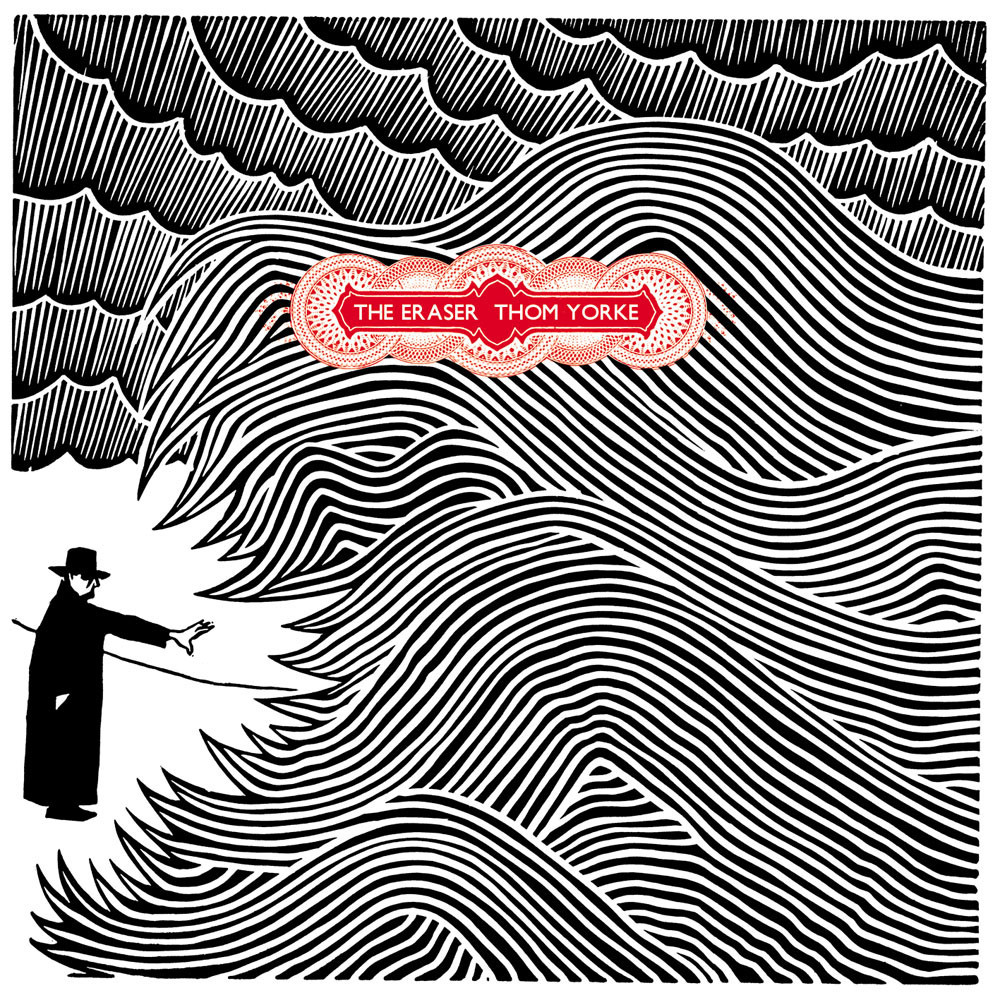In hindsight, The Eraser -- Thom Yorke's debut solo album, which turns 10 this Sunday -- is a fascinating detour in a brilliant career, a minor work from a musician whose every sneeze merits scrutiny. At the time it felt like something much bigger, in the same way that any sign of life seems massive on a barren planet.
Radiohead hadn't released an album in three years, and it would be another 15 months before In Rainbows burst into the world by surprise with all the vibrant color implied by its title. Although they were touring and recording in 2006, the future of the band seemed very much up in the air, even with Thom Yorke's promise that they were not splitting up. Their record deal was over, and word regarding a new release was nonexistent. We had no way of knowing they'd be back the following year with their most compulsively listenable album. For all we knew, Yorke's solo career was the future we were staring down. And that future began -- how else? -- with a collection of chilly, rhythmically charged electronic pop dirges that sounded like every Bends loyalist's worst nightmare.
Radiohead had calmed down the "But, guitars!" crowd on 2003's Hail To The Thief, the album on which they doubled back across their first decade and synthesized all the disparate sounds into an overstuffed buffet platter. Among other six-string highlights, that one began with "2+2=5," the most violently explosive song they ever recorded, and it contained "There There," simply one of the finest anthems in their songbook. But if Radiohead were inching back toward the guitars they made their name on -- a trajectory that would continue on In Rainbows -- Yorke himself was still fascinated by the possibilities of computer music. "One of the reasons we wanted to do the project," he told The Globe And Mail, "was to approach and engage with computers and not a lot else, and yet still have lots of life and energy in the music."
Anyone who thought Yorke might use a solo album to indulge his inner Neil Young fan was sadly mistaken. (Those folks would just have to wait 10 years for A Moon Shaped Pool.) Instead, he cut and pasted samples into ominous laptop grooves, with longtime producer Nigel Godrich there to help him pluck moments of genuine inspiration from amongst the rubbish. The album's bleak, synthetic palette was not exactly a new sound for Yorke, but it represented his fullest immersion into electronics to date. And more often than not, he achieved his stated goal of making these blips and skitters brim with life.
That's partially because Godrich has such a good ear. The loops that serve as The Eraser's foundation throw darkly beautiful sounds at you from unexpected angles, and they never lose their sense of propulsion even when they're re-ordering your sense of musical normalcy. Some of them feel more organic, like the post-"I Might Be Wrong" guitar and drum loop that became "Black Swan" or the gleaming LCD-screen house piano sounds on "The Eraser." Elsewhere, as on the light-up circuit board "Atoms For Peace" or the album-closing digital bath "Cymbal Rush," it seems to exist entirely within some Tron-like world inside a video game. Many, like "And It Rained All Night" and "Harrowdown Hill," are driven by monster bass riffs, which explains why Yorke recruited Flea for the live band that became Atoms For Peace. But they all feel of a piece. They presented a coherent vision.
Despite all the interesting musical elements, the highlight of any Thom Yorke release is his vocals, which act as the glowing molten core shining from within The Eraser's frigid sheen. His voice is a marvelous instrument, capable of fragile coos and feral growls and graceful flights of majesty. It is the sun and the moon and the stars, the fire and the water and the wind. And on this album, as ever, it gives voice to a white liberal looking at the world in despair, feeling guilty for his part in it, and wondering what possibly can be done. He's not as heavy handed as usual here, so even though some of the tracks have specific, publicly known backstories -- "Harrowdown Hill," for instance, is about David Kelly, the UK whistleblower who committed suicide after reporting that Iraq did not have weapons of mass destruction -- it's easier than ever to project today's crises in his words.
Who among us didn't look around this week and think, "This is fucked up"? Who doesn't hear prophetic echoes of Donald Trump in a line like, "Try to save it but it doesn't come off the rug/ Try to build a wall that is high enough"? The climate change that inspired Stanley Donwood's cover art seems even more horrifically urgent now. And in a summer where marginalized people have been gunned down repeatedly and right-wing nationalists are mobilizing, there are worlds within the phrase, "The more you try to erase me, the more that I appear." It's ironic that Yorke billed The Eraser as something "fun" to do on the side, a quick lark between grueling Radiohead studio sessions. This album is as much of a paranoid freakout as anything Radiohead ever released, and every bit as dour. And like the rest of Yorke's output, it derives its beauty from an ugliness that refuses to go away.
[videoembed size="full_width" alignment="center"][/videoembed]






